
 |
home ao english musik literatur journalismus bilder sprachen mehr shop sitemap | |
| Anis Hamadeh, 24.08.07 Der Fotograf Kai Wiedenhöfer aus Berlin begleitet den israelisch-palästinensischen Konflikt seit mehr als einem Jahrzehnt. Für den vorliegenden Bildband „Wall“ (Mauer) ist er alle sechs Monate ins Land gereist, um die Errichtung der israelischen Trennanlage zu dokumentieren. Die Bilder stammen aus dem Zeitraum zwischen Oktober 2003 und Januar 2006. |
Anis Hamadeh, 08/24/2007 Photographer Kai Wiedenhöfer from Berlin has accompanied the Israeli Palestinian conflict for more than a decade. To produce the photo book at hand, "Wall", he had traveled into the country every six months and documented the building of the Israeli separation device. The pictures date from the time between October 2003 and January 2006. |
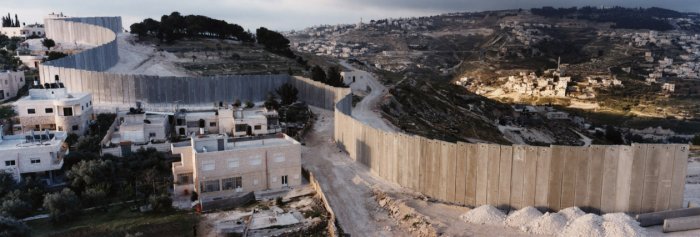 The wall in Abu Dis/Jerusalem. March 2004, © Kai Wiedenhöfer |
Alle 51 Fotos wurden mit einer 6 x 17 cm Panorama-Kamera aufgenommen und füllen jeweils eine Doppelseite im Format 59 x 20 cm. Am Ende des Buches finden sich Anmerkungen in englischer Sprache zu den einzelnen Motiven, zu Ort und Zeit der Aufnahme und zum Hintergrund. Die Bilder zeigen einzelne Abschnitte der Mauer, aus der Jerusalem-Region, aus der eingemauerten Stadt Qalqilya und anderen Orten der Westbank und auch des Gazastreifens. Oft sieht man die Mauer im Bau, mit Zwischenräumen oder als Fragment. Der Betrachter ahnt die Ausmaße, die das Gebäude einmal haben wird und sieht, wie Dörfer und Straßenkreuzungen in der Mitte durchgeschnitten werden. Darüber hinaus werden wir Zeugen von Mauerszenen, zum Beispiel Palästinenser, die die Trennvorrichtung an den Teilen überklettern, wo sie noch nicht fertiggestellt ist. Begegnungen zwischen der Militärmacht und der arabischen Bevölkerung, Demonstrationen und passiver Widerstand. Ein Junge, der als menschliches Schutzschild auf einen israelischen Militärjeep gebunden ist, Kunst am Bau, und immer wieder die Trümmer palästinensischer Häuser und Infrastruktur. |
All 51 photos were taken with a 6 x 17 cm panorama camera and each fills a double page of the format 59 x 20 cm. At the end of the book you find annotations in English about the individual motifs, the place and time of the shot and the background. The pictures show individual parts of the wall, from the Jerusalem region, from the village Qalqilya, that is walled in, and from other places in the Westbank and also the Gaza strip. Often one sees the wall in the making, with spaces in between, or as fragments. The spactator can guess the dimensions the building will attain and sees how villages and junctures are being cut in the middle. Apart from that we can witness scenes at the wall, for example Palestinians climbing over the separation device where its building is not finished yet. Encounters between the military power and the Arab population, demonstrations and passive resistance. A boy who is tied on an Israeli army jeep as a human shield, art on the wall, and again and again the rubble of Palestinian houses and infrastructure. |
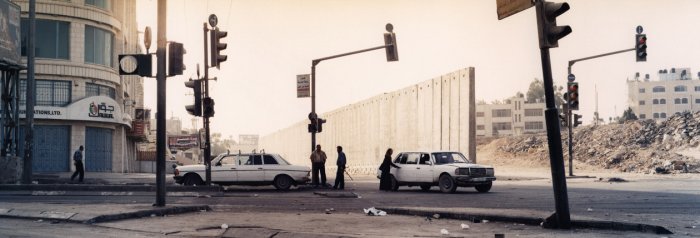 Junction in al-Ram/Jerusalem. October 2004, © Kai Wiedenhöfer |
Nach Angaben der israelischen Menschenrechtsorganisation Btselem wird die Mauer eine Länge von etwa 700 Kilometern haben, von der mehr als die Hälfte fertiggestellt ist. Nicht nur die schöne Landschaft wird zerstört und verschandelt, die Trennvorrichtung ist ganz bewusst nicht auf der Grenze geplant und gebaut worden, sondern vielerorts auf palästinensischem Gebiet, wie man auf dieser Karte sehen kann: www.btselem.org/Download/ Separation_Barrier_Map_Eng.pdf. Der damit verbundene Landraub ist ein Garant für mehr Unsicherheit und Ärger in der Region. Er erinnert an 1948, als Israel gegründet wurde – auf einem größeren Teil als vom ohnehin umstrittenen UN-Teilungsplan vorgesehen. Deutlicher als durch den Bau einer solchen Mauer kann man die eigene Konfliktbereitschaft kaum demonstrieren. „Wir wollen die Palästinenser zermürben“, sagt das Bauwerk aus, und vor allem: „Wir wollen euer Land, Stück für Stück.“ Den Bevölkerungen in Israel und der westlichen Welt hingegen sagen die israelischen Politiker, dass es um die Sicherheit gehe und um den Schutz der jüdischen Einwohner. Es ist dasselbe Argument, mit dem auch alle anderen Menschenrechtsverletzungen gerechtfertigt werden: die Hinrichtungen oppositioneller Politiker, die kontinuierliche Tötung von Zivilisten, die Inhaftierung von 10.000 Palästinensern, die Flüchtlingsfrage, die Besatzung, die Enteignung, der ständige Beschuss, die Straßen und Siedlungen „nur für Juden“ auf fremdem Territorium, die Zerstörung von Häusern, das Entwurzeln von Olivenbäumen, die Beschlagnahmung von Wasser (auch durch die Mauer wechseln wieder Brunnen von arabischem auf israelisches Gebiet), die Schikanen an den Checkpoints, die Kollektivstrafen für die Bevölkerung, und so weiter und so fort. Es sind der Antisemitismusvorwurf und das Veto der USA, die dafür sorgen, dass Israel für seine Taten nicht zur Rechenschaft gezogen werden kann. Um dem angesichts der Besatzung ebenso absurden wie ideologisch-dogmatischen Vorwurf des Antisemitismus zu entgehen, berichten die Mainstream-Medien in Deutschland und anderen Ländern regelmäßig selektiv und suggestiv. Sie legen nahe, dass sich Israel das Terrorproblem nicht selbst geschaffen hat und sind dabei sehr erfinderisch, weshalb sie eine Mitverantwortung tragen und sich zum Komplizen machen. Dasselbe gilt leider für die allermeisten Politiker. Sie versuchen zu balancieren und stellen den Nahostkonflikt so dar, als gäbe es zwei gleichgewichtige Gegner, die gegeneinander kämpfen, was Unsinn ist. Sie erwähnen die Besatzung und die Flüchtlingsfrage gar nicht erst, ebenso die drei Milliarden Dollar, die Israel jedes Jahr von den USA bekommt – rein für militärische Zwecke, ohne die Wirtschaftshilfe. So obliegt es anderen, darüber zu schreiben und zu sprechen, nämlich denen, für die eine Demokratie ohne Menschenrechte nicht denkbar ist. |
According to the Israeli human rights organization Btselem the wall will have a length of about 700 kilometers, more than half of it being accomplished by now. Not only is the beautiful landscape destroyed and disfigured, the separating device also is consciously built and planned not on the border, but in many places on Palestinian territory, as you can see on this map: www.btselem.org/Download/ Separation_Barrier_Map_Eng.pdf. The land theft, that goes along with this, is a guarantee for more insecurity and trouble in the region. It reminds one of 1948, when Israel was founded – on a larger territory than suggested by the UN partition plan (which was controversial to begin with). It is hardly possible to demonstrate ones own readiness for conflict more evidently than with the erection of such a wall. "We want to wear down the Palestinians", is what this building is saying, and most of all: "We want your land, bit by bit." Addressing the populations in Israel and the western world, though, Israeli politicians say that it is all about security and the protection of the Jewish inhabitants. It is the same argument that also serves as a justification for all other human rights violations: the executions of oppositional politicians, the uninterrupted killing of civilians, the imprisonment of 10.000 Palestinians, the refugees issue, the occupation, expropriation, the constant shooting, streets and settlements "for Jews only" on alien territory, the demolition of houses, uprooting of olive-trees, confiscation of water (the wall lets more wells shift from Arab to Israeli land), the harassments at the checkpoints, the collective punishments for the population, and so on and so forth. The reproach of anti-Semitism and the US veto are the reasons why Israel cannot be made responsible for its deeds. In order to escape the reproach of anti-Semitism – which, in view of the occupation, is as absurd as it is ideologic-dogmatic – mainstream media in Germany and other countries pursues a selective and suggestive news coverage on a regular basis, suggesting that Israel did not produce the terror problem by itself and being quite inventive in that. Thus the media is co-responsible and an accomplice. The same unfortunately holds true for most of the politicians. They try to balance and draw a picture of the Middle East conflict that suggests the existence of two equal oppponents fighting against each other, which is nonsense. They do not even mention the occupation and the refugees issue, as they do not mention the three billion dollars Israel receives annually from the USA – merely for military purposes, without the economic aid. So it remains with others to write and speak about it, namely those for whom a democracy without human rights is unthinkable. |
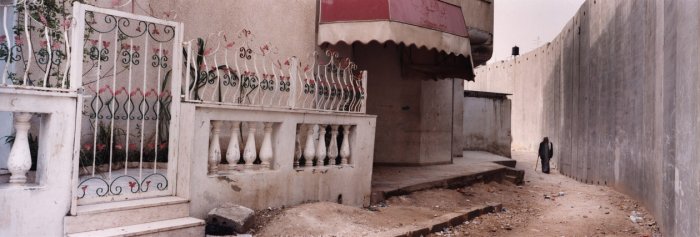 Village of Nazlat 'Isa. October 2003, © Kai Wiedenhöfer |
Kai Wiedenhöfer lässt Fotografien sprechen. Seine Mauerbilder sind ein Zeitdokument. Sie zeigen eindrucksvoll eine politische Tat in ihrer Entstehung und lassen den Betrachter und die Betrachterin ratlos zurück. Es bedarf keines internationalen Gerichtshofs, um zu erkennen, dass dieses Bauwerk kein Beitrag zum Frieden ist, sondern ein zerstörerisches Monster. Der Fotograf Kai Wiedenhöfer hat den Mauerfall in seiner eigenen Stadt Berlin dokumentiert, was ihn zu der Überzeugung gebracht hat, dass Mauern – selbst wenn sie auf der Grenze gebaut sind! – keine realistischen Lösungen für politische Konflikte bieten. | Kai Wiedenhöfer lets photographs speak. His pictures of the wall are a time document. They impressingly show a political deed in its making and leave the spectator in perplexity. It does not need an international court to recognize that this building is not a contribution to peace, but a destructive monster. Photographer Kai Wiedenhöfer had documented the fall of the wall in his own city, Berlin, which brought him to believe that walls – even if they are built on the borderline! – offer no realistic solutions for political conflicts. |
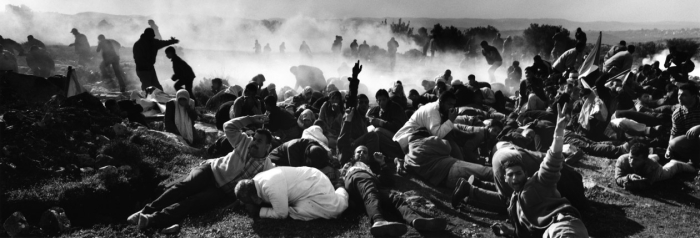
March 2004, © Kai Wiedenhöfer |
| The Palestinians from Intifada to Intifada (11.11.02, English:) For more than ten years, from 1990 to 2001, Kai Wiedenhöfer lived and photographed in the Israeli-occupied territories. He has learnt the Arabic language, taken a close look at the Middle East, and thoroughly tried to understand the mentality of its inhabitants. He has a new photo book (see below): "Perfect Peace – The Palestinians from Intifada to Intifada" (Deutsch:) Über zehn Jahre lang, von 1990 bis 2001, lebte und fotografierte Kai Wiedenhöfer in den israelisch besetzten Gebieten. Er studierte Arabisch und den Nahen Osten und bemühte sich besonders darum, die Mentalität der Bewohner zu verstehen. Er hat jetzt ein neues Fotobuch im Steidlverlag (siehe unten): „Perfect Peace – The Palestinians from Intifada to Intifada“ |
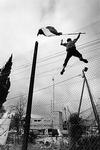 Palestine © kw |
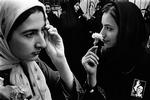 Iran © kw |
 Afghanistan © kw |
Kai Wiedenhöfer |
Kai Wiedenhöfer / Steidl Publishers |
 |
| Datenschutzerklärung und Impressum (data privacy statement and imprint) |